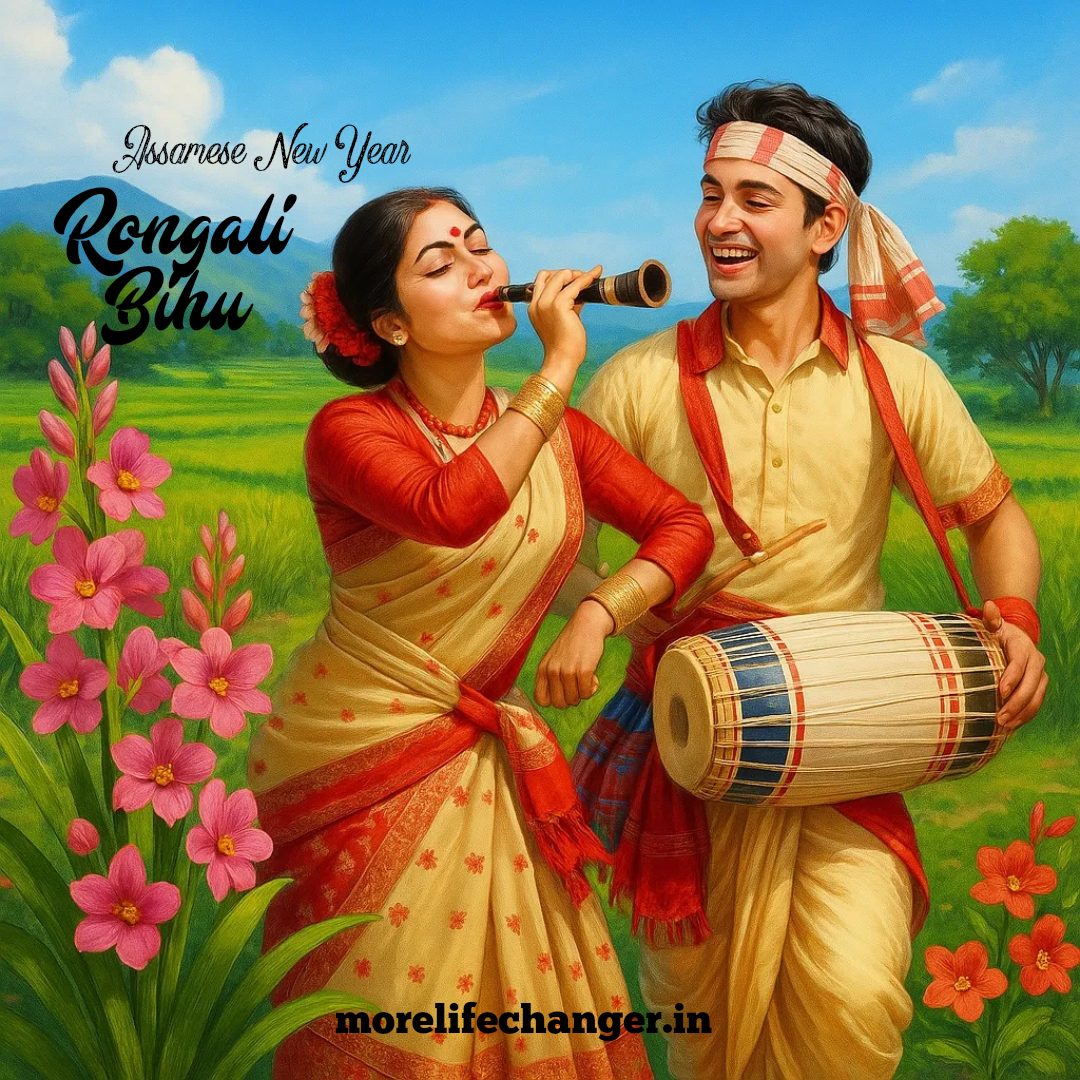Rongali Bihu, also known as Bohag Bihu, is one of the most significant and widely celebrated festivals in Assam. It marks the arrival of the Assamese New Year and celebrates the beginning of spring, as well as the harvest season. The festival is full of vibrant cultural traditions, music, dance, and feasts, and is a time of joy, renewal, and celebration for the people of Assam.
Key Aspects of Rongali Bihu:
1. When is Rongali Bihu Celebrated?
- Rongali Bihu usually falls around April 14th or 15th each year, marking the beginning of the Assamese month Bohag in the traditional Assamese calendar. It corresponds to the Baisakhi festival in other parts of India.
- It is celebrated for several days, typically from April 13th to 17th.
2. Cultural Significance:
- New Year Celebration: Rongali Bihu marks the Assamese New Year and symbolizes the beginning of the harvest season. It’s a time of renewal and rejuvenation of nature, celebrating the fertile lands of Assam.
- Agricultural Festival: Traditionally, it is also a harvest festival, expressing gratitude to nature for the crops. It celebrates the fresh start of the farming cycle as the new season begins.
Also read : Solar new Year
3. Major Activities During Rongali Bihu:
- Bihu Dance (Bihu Nritya):
- One of the most iconic features of the festival is the Bihu dance, which is performed by both men and women. The dance is characterized by rhythmic footwork, energetic movements, and is often performed to the beat of traditional instruments like the dhol (drum) and pepa (horn).
- Traditional Songs (Bihu Geet):
- Bihu Geet are folk songs sung during the festival, and they reflect the joy, love, and themes of nature. These songs are integral to the celebrations, with the lyrics often speaking about the beauty of nature, the love stories of young lovers, and the relationship between the people and the land.
- Goru Bihu :
- The first day of Rongali Bihu is known as Goru Bihu. This day is dedicated to the cattle and other farm animals, which are essential for farming. People bathe their cows, buffaloes, goats, and other animals in rivers, apply turmeric and other traditional pastes, and decorate them with colorful mekhla chadors and flowers.
- Manuh Bihu :
- The second day is Manuh Bihu, which is the actual New Year celebration for the people. On this day, people visit friends and relatives, greet each other with the traditional Assamese greeting, “Bihu Xubhechha” (Bihu greetings), and exchange gifts, sweets, and traditional food. The younger members of the family seek blessings from their elders.
- Bihu Pitha and Traditional Sweets:
- One of the most delightful parts of Rongali Bihu is the Bihu Pitha, a variety of traditional Assamese sweets that are made from rice flour, jaggery, and coconut. Popular varieties include Til Pitha, Sunga Pitha, Muthiya, and Laru.
- Bonfire and Festive Feasts:
- People gather around bonfires (locally known as Bhelaghar) in the evening, where they celebrate with family and friends. Special dishes like khichdi, pithas, and masor tenga (sour fish curry) are prepared and shared.
4. Rangoli and Decoration:
- During Rongali Bihu, homes are often decorated with rangolis (kolams), traditional Assamese kantha, and fresh flowers. People also hang torans (decorative garlands) of mango leaves and marigolds at the entrance to welcome prosperity.
- The Bihu Rangoli patterns are made using rice flour, colored powders, and flower petals, creating beautiful and vibrant designs to celebrate the auspicious occasion.
5. Traditional Dress:
- Women: Women wear traditional Mekhela Chador, which is a two-piece garment, and often accessorize with jewelry like gamkharu (bracelets) and jewelry made of gold and silver. During this festival, they often wear colorful sarees and chaddar.
- Men: Men typically wear dhoti and gamosa, a traditional Assamese piece of cloth that symbolizes hospitality and is a gesture of respect and love.
6. The Role of Family and Community:
- Rongali Bihu is a festival celebrated in family and community settings. It is a time when people reconnect with relatives, organize social gatherings, and celebrate unity. Communities often come together for cultural performances, dances, and feasts.
7. Bihu in Modern Times:
- Today, while traditional customs remain central, Rongali Bihu has evolved with modern influences. Many people, especially in cities, celebrate with community events, Bihu parties, and cultural performances. The festival is also marked with Bihu Melas (fairs) and events that showcase Assamese culture, arts, and crafts.
Please join discussion on Facebook about world facts and its secret .

